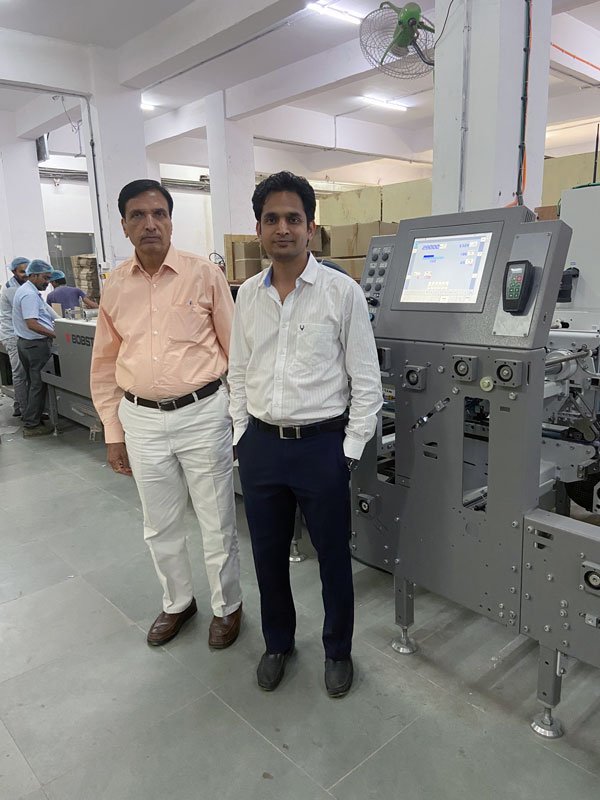Nagpur-based Sushant Packaging specializes in printing and converting packaging cartons for brand owners in the food, seeds, engineering, pharmaceutical, and cosmetics industries. The company strengthened its pressroom in the middle of 2019 by bringing in a Heidelberg 8-color plus double-coater offset press. Sushant also enhanced its converting section by adding a Bobst Novacut die-cutter and a Bobst Ambition folder-gluer in December 2019 and January 2020, respectively. Now the company is contemplating its next expansion effort.
“In the last one and a half years, we have added several machines. We added the 8-color Heidelberg offset press and two Bobst converting equipment. We also bought a single-color gravure sheetfed press for special cartons requiring high-quality gold printing. Plus, we already have many other machines bought over the years. Now, we have run out of space and will need to expand,” says Shrikant Nagmote of Sushant Packaging.

The two Bobst machines that Sushant bought during December and January have helped the company ease the converting process. Due to the expansion in print capacity, Sushant needed to have a higher converting capacity to avoid bottlenecks and achieve on-time throughput.
Land for new plant already purchased
The company has bought a piece of land measuring 50,000 square feet to set up the new unit. The new project is likely to be executed in the next 12 to 24 months. Sushant currently operates out of a built-up area of 1.4 lakh square feet spread across two units.
“We have bought the land, and while the start of construction is still some time away, we have started planning it. We expect that this project will take another year or two to fructify. The printing and converting set up we plan to have in the new premises will be similar to what we currently have in our existing units,” Nagmote says.
The Sushant pressroom currently runs the 8-color plus double-coater, 2-color, 4-color, 5-color, and 6-color plus UV coater offset presses. All the presses are Heidelbergs. The company has several Bobst machines in the existing converting sections, including two Novacut die-cutters, an Ambition folder-gluer, and a Lila folder-gluer for E-flute cartons.
Founded by Nagmote in 1988, Sushant Packaging has made a significant mark in the packaging industry with consistently excellent growth over several years. The company is ISO 9001-2008 certified.
New plant to begin with machines from Heidelberg and Bobst
At the proposed new facility, Sushant plans to begin with one Heidelberg multicolor plus coater offset press and a couple of converting machines from Bobst. Nagmote says he has had an amazingly positive experience working with both Heidelberg and Bobst and would like to continue the association with both these companies.
“As mentioned earlier, the new unit will take a couple of years to become operational. However, we have decided that the printing and converting setup will be the same as what we have now. We will go for a Heidelberg press and converting equipment from Bobst,” he says.
Swift recovery led by agri and food industry demand
Packaging companies were considerably less affected during the lockdown thanks to the strong demand for essential industries like packaged food products and agricultural products such as seeds. Sushant’s operations were also relatively stable during the lockdown due to the need for seed packaging cartons.
“Demand for seeds came in around March and continued, due to the above-average monsoon rains and busy sowing season. We were kept busy due to strength in the agricultural sector. We faced some labor issues, but it did not overly impact our production. We saw a dip of about 15% in output,” Nagmote says.
The carton packaging market has swiftly returned to normal since the easing of the lockdown began in June. In the past few weeks, the demand for cartons from the food and snacks industry has been robust, leading to the recovery for Sushant.
“The demand for cartons from the food industry has been very strong in the recent past. And because of this, we expect our production during Diwali to be on par with that during last Diwali. We expect to recoup most of the production losses due to lockdown in the next few months,” he concludes.











